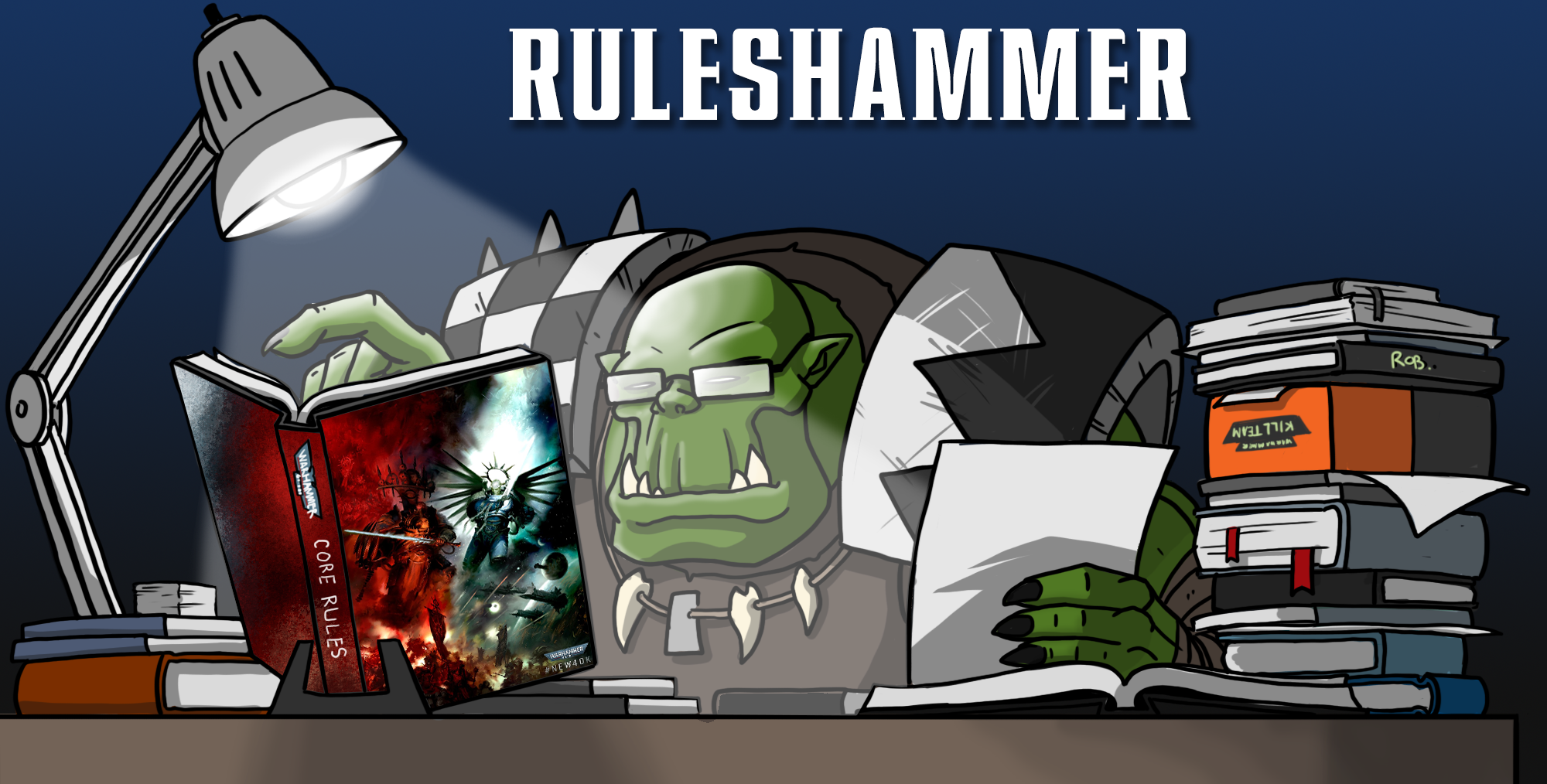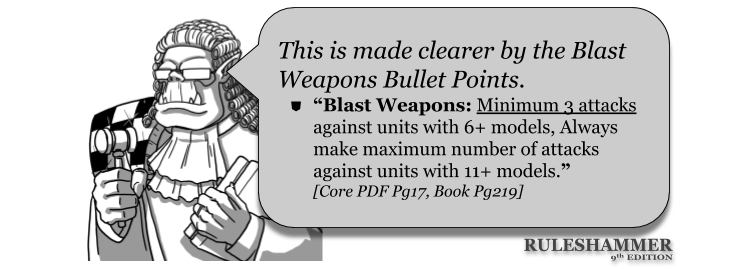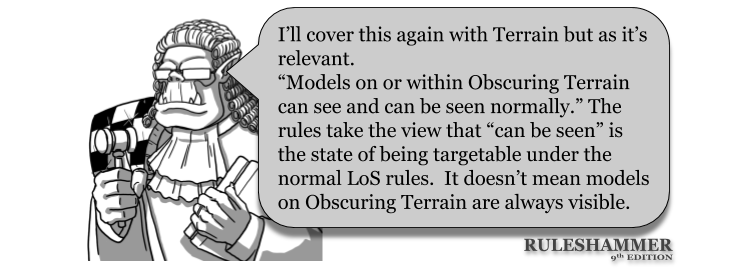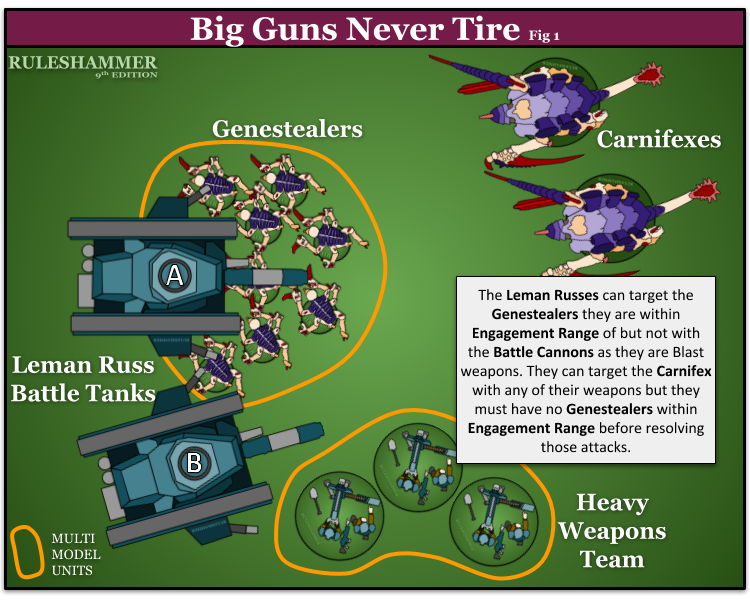With the new edition nearly upon us, we had Rob “Vre’kais” Chilton sit down with the new rulebook in the Indomitus boxed set and write his thoughts (in great detail) on the new rules – what’s changed, what needs clarification, and what you need to know. Ruleshammer will be doing daily posts over the next two weeks talking about key changes to the rules and going over each phase of the game.
Now that we know how to move models around the board in 9th we can get on to the important bit – killing stuff! Today, we’ll be looking at changes in two phases where a lot of this happens – the Psychic and Shooting phases.
Table of Contents
The Psychic Phase
Ordering of Powers
Pretty simple change for 9th here, you now have to resolve all of a Psyker’s powers before moving on to the next one.
Once you have selected an eligible Psyker unit from your army, you can attempt to manifest one or more psychic powers with it. After you have finished manifesting all of this unit’s psychic powers that you want to, you can then select another eligible Psyker unit from your army to attempt to manifest psychic powers with, and so on, until you have done so with as many of your eligible Psyker units as you wish. No unit can be selected to manifest psychic powers more than once in each Psychic phase. [Core PDF Pg14, Book Pg214]
So you can’t move back and forth between them any more, which was permissible in 8th Edition as the rules for this phase cycled you through manifesting powers one at a time rather than casters.
Wings: This is a massive change for some armies, Thousand Sons in particular. I can only assume their spreadsheets are going to become yet more nightmarish as they have to account for the possible caster orders.
Eligibility
As discussed in the Movement article you cannot pick a PSYKER unit that has Fallen Back to manifest powers unless that unit is also TITANIC.
Smite Changes
Warp Charge
Smite’s increasing Warp Charge as you cast it (one of the earliest 8th edition changes) is now part of the main rules, rather than matched play only, but it no longer caps out at Warp Charge 11 – so if you manage to bring an army with loads of casters then you can eventually hit a point where you cannot successful cast Smite at all.
Wings: Technically the rule doesn’t have the exemption for Thousand Sons or Grey Knights on this “in-line” either, but that will extremely obviously be added to their faction rules as part of the start-of-edition errata we were promised.
Multi Smites
This is an odd one; it could easily be an oversight but the new wording for the phase does not prevent an individual Psyker from manifesting Smite multiple times.
With the exception of Smite, you cannot attempt to manifest the same psychic power more than once in the same battle round, even with different Psyker units. [Core PDF Pg14, Book Page 214-215]
Each attempt would still increase the warp charge value though, so it does get harder still. This could be intentional, but does offer some interesting implications for units that have multiple psyker units like Grey Knights or Horrors.
Wings: My line on this is that it’s an accident and will probably get changed. The chain of rules that made multi-smiting not possible in 8th was a weird side effect of other stuff that has been tidied up and in-lined, and I suspect this probably just snuck through a gap left by that. I’m willing to be proven wrong on that (and the fact that the Warp Charge doesn’t cap gives me slight pause) but the stuff you can do with some of the more powerful casters in the game (Eldrad and Magnus in particular) is probably a bit much.
Psychic Focus
Like the increasing Warp Charge on Smite, only being able to manifest each power once per Battle Round has been in-lined as a core rule, as can be seen from the quote above. This is entirely sensible – being able to cast some powers multiple times didn’t really make non-matched play more fun, and it’s good to see GW trying to keep everyone on the same page.
The Shooting Phase
Core Concepts
Any or All Weapons
8th Edition’s core rules forced you to fire all eligible weapons when selected to shoot, requiring an FAQ down the line so as not to force you to fire single-shot weapons. 9th takes that further – you can now always choose to fire “any or all” weapons you are equipped with.
Wings: This gives you a bit of extra flexibility to try and modulate the damage you deal to targets – good if you want to set up some charges.
Decisions and Determinations made at the Targeting Stage
As previously, when resolving shooting for a unit you first determine how many attacks they will make at who, and then resolve them. Once the target for an attack is chosen, it is resolved even if the target would later no longer be valid thanks to models being destroyed and removed.
In addition, there are a few more things that are now explicitly determined when targeting.
Selecting Shooting Profiles
A change I’m very happy to see confirmed as a core rule is that when you target a weapon with multiple profiles you must pick which profile you are using at this stage. So if you have a plasma rifle you need to declare if it’s over heating or not before making any attacks. This was already implied by 8th’s rules by the need to know what range a weapon has when targeting, but it does resolve any confusion. This confirms that overheating weapons can still overheat even if their target has died before you get to them, you still need to roll for those hits to check.
Blast Weapon Rule
The blast rule has caused a bit of confusion. Here’s some explanation to help. The effect for 6-10 models and the effect for 11 or more models start with this clause;
When a Blast Weapon Targets a unit…
So you only need to check how many models are in the unit during the targeting step of the shooting phase for each unit, it doesn’t change once you start shooting. If a Leman Russ fires its bolters at a unit of 11 models and reduce the unit to 9 models, the Battle Cannon doesn’t drop down to only get a minimum of 3 attacks. It would still get its maximum 6 attacks because when it targeted the unit, the unit had 11 or more models.
Secondly the minimum is for the total attacks per gun, not a minimum result per dice. A d3 shot weapon and a 2d3 shot weapon vs a unit of 6 or more models both have a minimum total attacks of 3. This is true for 3d3, 3d6, 4d6 etc.
Wings: We are aware that this is currently being hotly contested online – there seems to be some disagreement within different groups as to whether this rule was tested as “minimum 3 per weapon” or “minimum 3 per dice”. While there is one fragment of the wording that somewhat supports the per-dice interpretation, in multiple places the rules state that the minimum shots count is per weapon, and there are plenty of places where “per dice” could have been added if that was the intent – and 9th is generally very up-front about saying what it means. As I said in my rules review, I think not including an example of a multi-dice weapon here was a big miss – this could have been easily cleared up.
True LoS is still around
This is probably one of the most unclear things in the whole ruleset, ironically. LoS has not actually changed in 9th, it’s still a stoop down and take a look at what you models can see. There are just now rules that might override it such as the Obscuring trait.
There’s a lot more to break down about the Obscuring Rule (and the other Terrain Traits) though which we’ll cover in an article on terrain.
Resolve Attacks
New Ordering
There’s now a more detailed order to which weapons should be resolved, you still get some choice in it but it groups attacks by units and by weapon. Check the flow chart below to see how this works now.
Modifiers to Hit and Wound
One of the biggest changes for 9th in my opinion is that Hit and Wound modifiers are now capped at -1 and +1 total. Keep in mind this is just the cumulative result though that is capped.
Wound Allocation
This was a subtle change from 8th but whilst wound allocation is still players choice there is a small change.
If a model in the target unit has already lost any wounds or has already had attacks allocated to it this phase, the attack must be allocated to that model. [Core PDF Pg18, Book Pg220-221]
So in 9th it’s not just wounded models that you have to keep allocating to, once a unit has had any attacks allocated that phase you have to continue allocating them to the same model that phase or until it is removed even if it has full wounds. This has a few impacts; it resolves a few quirks for when resolving attacks that change characteristics mid attack because you can’t for instance allocate the normal AP-1 and AP-4 attacks to different models any more (obviously you’d have had to slow roll in 8th to do this if the models had more than 1 wound, as wounded models have to have attacks allocated then and now). It was sometimes a good idea to do this if you had a single model in your unit that ignored AP-1.
Wings: This is a big deal for some notable units, such as Bullgryn, Crisis Suits and Deathwatch Veterans.
Ignore Wounds Abilities
Confirmed in the rules that you can only use one Ignore Wounds type ability to ignore any wound, including Mortal Wounds. This is just nice to have, think it was buried somewhere in 8th’s margins if there at all.
Wings: It’s an in-lining of an FAQ ruling, for what it’s worth. Makes total sense.
Assault Weapons Clarification
Assault weapons now explicitly let you select a unit to shoot even if you advanced with them, as long as they have at least one Assault Weapon. They can then only fire those weapons. This clears up what was technically a long-standing gap in RAW.
Ruleshammer’s stance has been essentially “ha yes, very funny, my model with its assault weapon can shoot though” and that GW’s lack of FAQ on the old argument that Assault Weapons don’t work Rules as Written was because they don’t FAQ things that are obvious. That aside, I’m all for rules being unambiguous so this is a welcome change in that regard.
Wings: There were just a couple things like this in 8th that GW never quite mustered up the determination to fix, and it is nice to see them sorted out, even if the discourse around this one got incredibly old real fast.
Heavy Penalty
There’s two main changes to the heavy penalty for 9th. One has been talked about a lot – the -1 to hit modifier now only applies to Infantry. There’s a more subtle one though in the main rules for Heavy Weapons.
When an Infantry model shoots a Heavy weapon, subtract 1 from the hit rolls when resolving that weapon’s attacks if the firing model’s unit has moved for any reason this turn (e.g. it made a Normal Move (pg 10) this turn). [Core PDF Pg17, Book Pg218]
The key change here is that the Heavy penalty is not per model any more, it’s about what type of move the unit made, if any. In 8th it was implied that if the model with the Heavy weapon remained stationary then it didn’t have the -1 to hit penalty. In 9th that modifier applies if any models in the unit move.
I’m going to mention this here because it seems relevant, but Heavy does still get -1 to hit on Vehicles and Monsters if they are in combat and using Big Guns Never Tire to shoot point-blank, it’s just that this penalty has moved from being a thing specifically about Heavy Weapons to being part of that new rule.
Pistol Targeting
Another smaller change for 9th affects what pistols are allowed to fire at. They can now target units they are within Engagement Range of, but it doesn’t have to be the closest enemy unit any more and they can target units within Engagement Range of other friendly units if they are also within Engagement Range of that same unit (similar to how Big Guns Never Tire works).
Big Guns Never Tire
Big Guns Never Tire is one of the significant updates for 9th. I’ve summarised how it works in this article. Here’s the overview again.
Look Out Sir
This is another key change in 9th that we’ve already covered during the previews.
The changes to Look Out Sir have resolved a lot of the weirder bits of the old character rule, where at least they now need some bodies or something big to hide behind. I’ve done a few examples for this rule as well.
Psychic and Shooting Phase Conclusions
The Psychic and Shooting phases have a lot of changes that just clarify things that were only implied for 8th, but there are also new rules like Big Guns Never Tire that are going to significantly change the game.
All in all the rules for the Shooting phase have improved drastically and again that’s because far more of them got proper explanations in 9th rather than being squeezed into the margins. There’s still plenty to cover related to shooting though, particularly in the new terrain rules – expect to see a proper in depth look at the traits and types soon!
Have any questions or feedback? Got a rules question you want answered? Drop us a note in the comments below, ask a question in our Ruleshammer form, or head over to r/ruleshammer to discuss.










